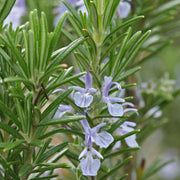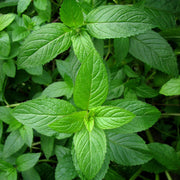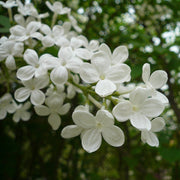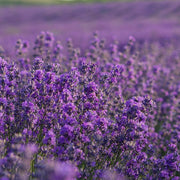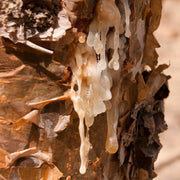Mood-boosting oils & recipes for stress relief
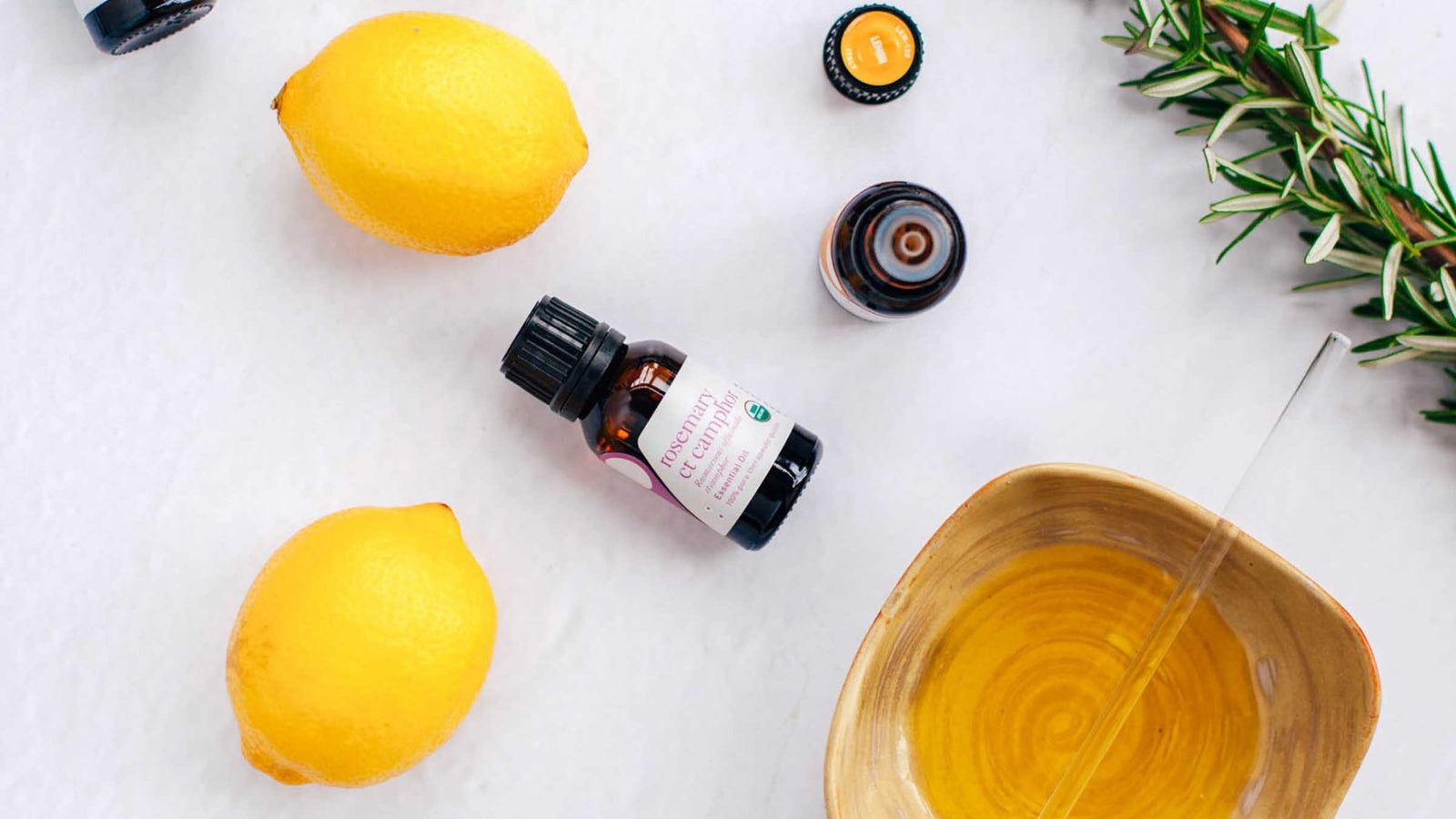
Mood-boosting oils & recipes for stress relief
Here are 10 of our top oils for boosting your mood and feeling more energized. We love using these oils in inhalers, roll-ons, room sprays, diffuser blends, body oils, lotions, and more.
Get creative and have fun!
Top 10 mood-boosting essential oils
1. Rosemary ct Camphor Oil
Latin name: (Rosmarinus officinalis ct camphor)
Drifting attention? Rosemary ct camphor has been shown to support cognitive performance (1)! Rosemary ct camphor has been used for thousands of years to help sharpen attention, improve memory, and help the mind focus on positive thoughts. The component 1,8-cineole may play a big role in this, as it’s been studied for its ability to boost mental clarity (2).
2. Peppermint Oil
Latin name: (Mentha × piperita)
Refresh your outlook and see the best in life with peppermint oil! Crisp, invigorating peppermint is rich in menthol—one whiff can clear your head, freeing your mind from stress and worries. Peppermint helps you focus on all the joy life has to offer (3). Menthol also creates a cooling sensation on the skin, which eases sore areas and brings in a fresh flow of healthy energy (4).
3. Ginger Oil
Latin name: (Zingiber officinale)
Do you carry nervous stress in your stomach? You’re going to love ginger oil! If you ever feel anxiety settle in your belly and prevent you from enjoying your day, ginger oil is going to be your new best friend. It smells just like the kitchen spice, and is a traditional oil for all things “belly” (5). Its sesquiterpene content is spasm-soothing. Plus, fiery ginger is energizing! Use it to settle your nerves and face challenging situations with courage.
4. Cardamom Oil
Latin name: (Elettaria cardamomum)
Cardamom oil’s bold presence can help you feel more energized and focused if you’ve been fatigued. Cardamom contains 1,8-cineole, which can get more energy flowing to your head (2). Its sweet, spicy scent aids concentration, while also imparting a sense of steady confidence (which stress and anxious feelings can sometimes chip away at). Cardamom both gives you the energy to go after your goals, and reassures you that “You’ve got this!”
5. Clove Bud Oil
Latin name: (Eugenia caryophyllata)
Use clove bud oil if stress often makes your muscles feel tense and sore. Warm, spicy, sweet, and woody, clove bud oil is rich in eugenol, which is why it’s so effective at easing tight muscles (6). Eugenol is a potent constituent for soothing sore, tender spots. That’s why clove bud massage blends can unravel deep knots of tension. Clove bud also makes room in your body for a fresh flow of positive emotions, which is why it’s often used in blends to lift the spirit out of chronic melancholy (7).
6. Lime Oil
Latin name: (Citrus aurantifolia)
Lime oil can bring a big smile to your face! Use it to soothe sadness and negative energy. One whiff of lime’s bright, sparkly, fruity scent can lift your spirits! The effects you’ll feel are largely due to d-limonene, lime’s most prominent component (and prominent in every citrus oil). d-Limonene has been shown to comfort anxious feelings and inspire more joy, making lime oil one of the most popular stress-busting essential oils (8).
Be safe! Steam distilled lime oil is NOT phototoxic! You can use steam distilled lime oil in topical blends without any concern of phototoxic reactions. At Aromatics, all of our lime oil is steam distilled, and is NOT phototoxic. However, lime oil that’s produced by cold pressing is phototoxic. If you apply it to your skin and then expose that skin to sunlight (or a UV tanning bed), serious negative reactions can result, including burning, blistering, and discoloration. Stick with 12 drops or less of cold-pressed lime oil per 1 oz (30 ml) of carrier to be safe.
7. Yarrow Oil
Latin name: (Achillea millefolium)
Yarrow oil helps calm hot emotions such as anger, frustration, and stress. It contains light and playful monoterpenes and more grounded sesquiterpenes, offering an emotionally balancing combination of components. Use yarrow to cool flares of anger and other strong negative emotions. A deep blue oil, yarrow is also renowned for soothing sore, damaged areas that need tender care as they heal (9).Yarrow’s scent is sweet, herbal, and floral with sharp camphoraceous notes.
8. Spike Lavender Oil
Latin name: (Lavandula latifolia)
Use spike lavender to stay active and exercise your body. Spike lavender oil helps you stay motivated! Its aroma is similar to true lavender’s, but it’s more energizing. Like true lavender, spike lavender contains linalool—meaning it can calm the nerves and soothe tense muscles (10) (11). However, spike lavender also contains the more invigorating component 1,8-cineole—which can sharpen mental alertness and fill you with energy (2).
9. St. John's Wort Oil
Latin name: (Hypericum perforatum)
Using St. John’s wort is a classic natural method of overcoming anxious feelings and sadness. Rich in both uplifting monoterpenes and soothing sesquiterpenes, St. John’s wort can help you feel happy in the present moment. It eases nervous tension without making you feel too tired, and restores a zest for life that makes every day more enjoyable. This is an important oil for those who struggle with ongoing melancholy, stress, and tiredness (12). Learn how Aromatics sources, wildcrafts, and uses our own organic St. John’s wort!
10. Frankincense Oil
Latin name: (Boswellia carterii)
Frankincense is a classic essential oil for stress-related head tension! With an unmistakable balsamic, resinous aroma, frankincense has been used for thousands of years to clear the mind. Its ability to calm worries has made it a traditional oil for rituals and meditation. Today, we know frankincense is rich in α-pinene, which explains why it soothes the head in more ways than one: α-pinene can relieve physical aches (4).
Recipes for mood & energy
- Brighten the Mood Spray
- Yin & Yang Nervous System Lotion
- Happy Mood Inhaler
- Breathe & Be Confident Inhaler
- Mental Awakening Lotion
- Sunny Citrus Diffuser Blend
If you browse the recipes, you might notice that some of them include a few oils listed for relaxation in Chapter 3. That’s not a contradiction! While the oils in Chapter 3 are best known for calming stress, they can also complement the energizing oils in this chapter.
REFERENCES
1. Hongratanaworakit,T. (2009) Simultaneous aromatherapy massage with rosemary oil on humans. Scientica Pharmaceutica 77, 375-387
2. Moss, M. and Oliver, L. (2012) Plasma 1,8-cineole correlates with cognitive performance following exposure to rosemary essential oil aroma. Therapeutic Advances in Psychopharmacology 2, 3, 103-113
3. Moss, M., Hewitt, S. and Moss, L. (2008) Modulation of cognitive performance and mood by aromas of peppermint and ylang ylang. International Journal of Neuroscience 118, 59-77
4. Guimarães, A.G., Quintans, J.S.S. and Quintans-Júnior, L.J. (2013) Monoterpenes with analgesic activity – a systematic review. Phytotherapy Research 27, 1-15
5. De Pradier, E. (2006) A trial of a mixture of three essential oils in the treatment of postoperative nausea and vomiting. International Journal of Aromatherapy 16, 1, 15-20
6. Daniel, A.N., Sartoretto, S.M., Schmidt, G., Caparroz-Assef, M., Bersani-Amado, C.A. and Cuman, R.K.N. (2008) Antiinflammatory and antinociceptive activities of eugenol essential oil in experimental animal models. Brazilian Journal of Pharmacognosy 19, 212-217
7. Tisserand, R. and Young, R. (2014) Essential Oil Safety 2nd Edition. Edinburgh: Churchill Livingstone
8. Lima, N.G., de Souza, D.P., Pimenta, F.C., Alves, M.F., de Souza, F.S., (2012a) Anxiolytic-like activity and GC-MS analysis of (R)-(+)-limonene fragrance, a natural compound found in foods and plants. Pharmacology, Biochemistry and Behavior 103, 450-454
9. Saeidnia, S., Gohari, A.R., Mokhber-Dezfuli, N., Kiuchi, F. (2011) A review on phytochemistry and medicinal properties of the genus Achillea. DARU Journal of Pharmaceutical Sciences 19(3): 173–186
10. Woelk, H. and Schläfke, S. (2010) A multi-center, double-blind, randomised study of the Lavender oil preparation Silexan in comparison to Lorazepam for generalized anxiety disorder. Phytomedicine 17, 2, 94-99
11. Peanna, A.T., D’Aquila, P.S., Panin, F., Serra, G., Pippia, P. and Moretti, M.D. (2002) Anti-inflammatory activity of linalool and linalyl acetate constituents of essential oils. Phytomedicine 9, 721-726
12. Cui, Y., Zheng, Y. (2016) A meta-analysis on the efficacy and safety of St. John’s wort extract in depression therapy in comparison with selective serotonin reuptake inhibitors in adults. Neuropsychiatric Disease and Treatment 12: 1715–1723
Mood-boosting oils & recipes for stress relief
Join Our Newsletter
Save 15% on your first order
Aromatherapy sent directly to your inbox. Receive tips, essential oil recipes, promotion alerts, live events and more. We look forward to connecting with you! *Exclusions apply.


